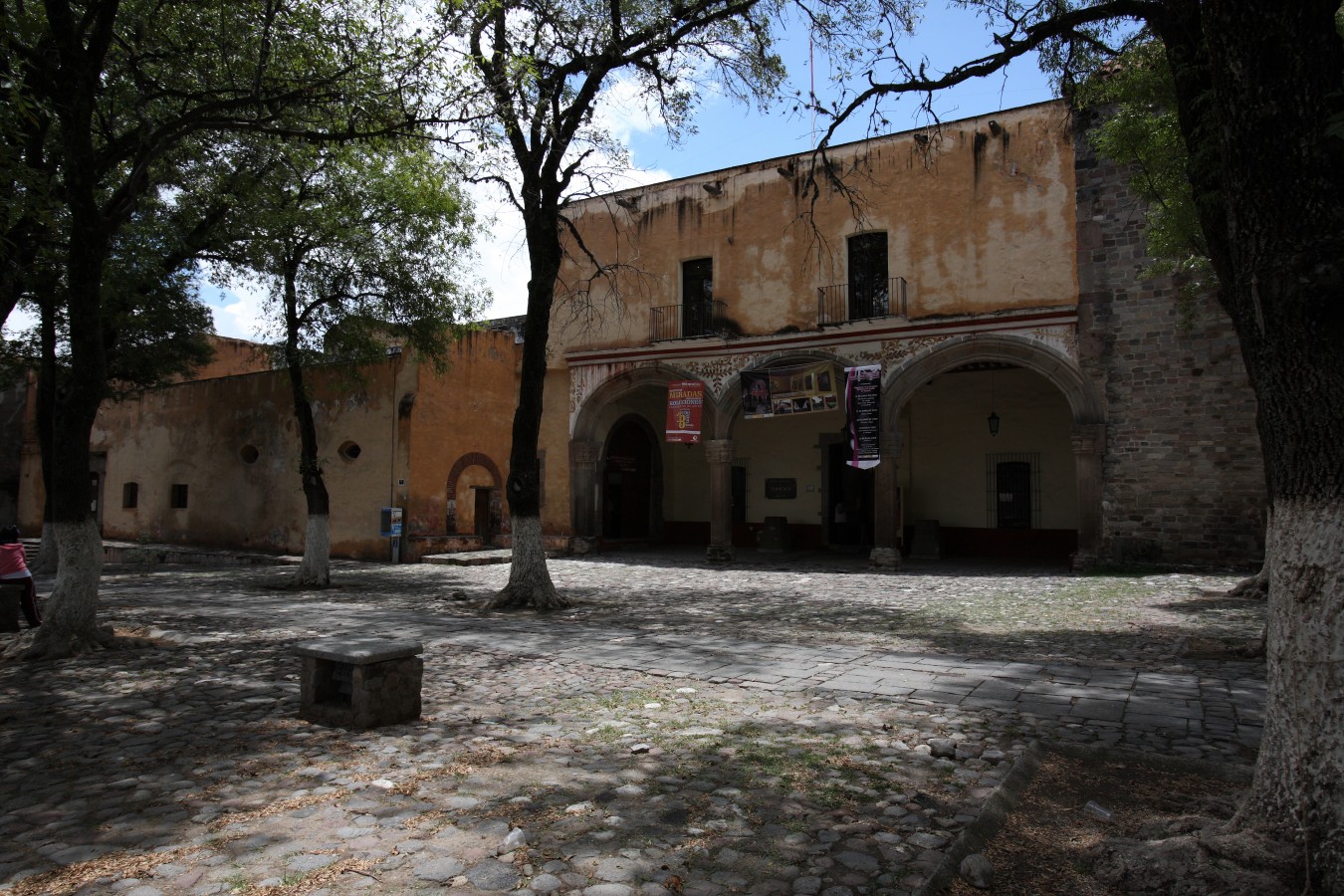The Regional Museum of Tlaxcala is located in a magnificent building that was formerly the Franciscan monastery—Ex Convento de Nuestra Señora de la Asunción—in the city of Tlaxcala. The building stands out as one of the first four monasteries to be built in the territory of New Spain after the Spanish Conquest led by Hernán Cortés. The complex is notable for the majestic atrium that still contains two “capillas posas” (simple chapel structures designed to cater to large congregations, positioned outside the main religious buildings in New Spain) and the chapel of the Holy Sepulcher. A parapet walk linking the monastery to a separate tower structure also remains.
The church (now known as the Catedral de Nuestra Señora de la Asunción) is one of the finest examples of Mudejar-style architecture to have been preserved in the Americas. The nave is an extraordinarily simple structure; a series of chapels were later added to it for the benefit of worshippers from Tlaxcala. The Chapel of the Third Order contains the pulpit where it is said that the first gospel was preached in New Spain, and the font in which the four lords or “tlatoque” (plural of “tlatoani”) from Tlaxcala were baptized. The superbly crafted principal altar is crowned by an eighteenth-century painting that depicts this baptismal scene.
The monastery building itself is unusually located to the left of the church, as normally it would be on the right-hand side. Over the years it has undergone several adaptations and been put to a number of different uses, including as a monastery, a school for the children of noblemen, a military barracks, a prison, and now as the Regional Museum of Tlaxcala.
The building houses interactive exhibits of the paleofauna found in the local area. The archeology galleries boast pre-Hispanic artefacts found during excavations, both at archeological digs and after having been recovered during excavations carried out for infrastructure projects. The galleries on the Conquest and viceregal period explain the role played by the Tlaxcalans during the Conquest and the territory’s evangelization after it became New Spain; there are also reproductions of a series of documents on the processes of change that led to the development of the Tlaxcalan people’s identity over the course of their history.
The San Antonio Gallery is of particular interest: its exhibition of large-scale paintings reveals the importance of Saint Anthony in the day-to-day life of the monastery, since the paintings used to be part of it. The next gallery takes visitors on a tour through the society, economy and power relations between the different levels of Tlaxcalan society, concluding with an exhibit on the Mexican Revolution that consists of a video and an impressive photomural of the Apizaco railway station.
On leaving the galleries, visitors can explore the upper cloisters and marvel at the wonderful octagonal fountain in the lower cloisters, as well as the garden located in the museum’s service areas. A sundial is located above the garden at the intersection of the south and west walls; although it is not original, its existence reminds us of the importance of measuring time in such a location. A font on the south wall, between the library and restoration workshop, was used to capture rainwater in the monastery, highlighting the importance of collecting this vital liquid for the inhabitants’ use and consumption. In the pre-Hispanic period the site was known as Chalchihuapan, a place of worship for Chalchiuhtlicue, goddess of the terrestrial waters and companion of Tlaloc.
The final stop on the tour of the museum is the Dr Andrés Angulo Library, which has a special collection of books on anthropology and history, and is located in the former galleries of the prison that functioned in the first quarter of the twentieth century, and where many fragments of mural paintings from the sixteenth to the nineteenth centuries still remain.
The Jorge “Ranchero” Aguilar bullring outside the museum is also notable; built in the first half of the 1800s, it is one of the earliest of its kind. The place where it was built was formerly used to receive pilgrims and as a center for the Hospital de la Encarnación, one of the oldest medical institutions in New Spain. The Calzada de San Francisco leads back to the center of the city, and is a magnificent connection between the magic and mysticism of the monastery and the hubbub of the city.







